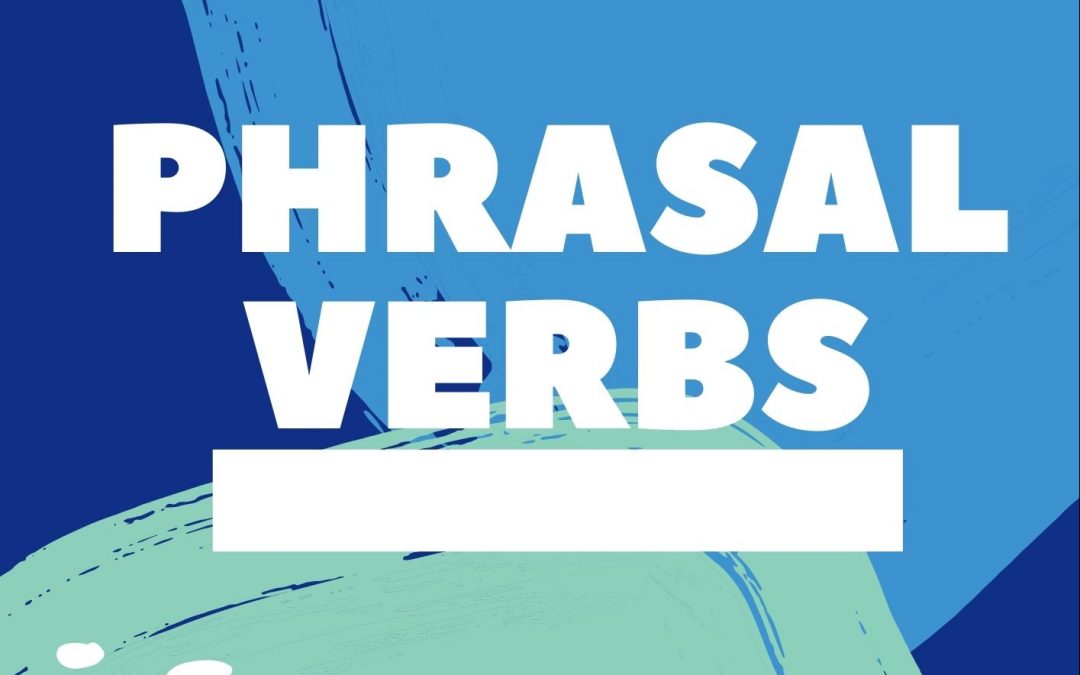Most of my students like phrasal verbs about as much as they like exercise bikes and try to use them with roughly the same frequency. Native speakers, on the other hand, find them so easy and flexible that we can invent them spontaneously to serve when we don’t know the technical word for an action.This is why I’ve always thought that a lot of the problems with phrasal verbs for students must come from the way we teach them. When I started teaching, we just taught phrasals by category (“Phrasal Verbs for Cooking”, etc.) or by verb (“Phrasal Verbs with SET”, etc.). Fortunately, you don’t see these approaches very often these days because, frankly, they don’t help much.
Move your Focus
Most of us these days reckon that the key to a phrasal verb is what we often call the “preposition” (it’s usually an adverb, in fact, but we’ll get to that later). The link between go out, drive out and walk out is clear to see, whereas there isn’t much to connect “get out of jail” and “get over a hangover”. You can even see the consistency in more difficult phrasal verbs like run out, sell out and burn out, which all refer to things reducing to nothing. A good way to understand this focus on the preposition is to start with a clear example like UP.
What is UP?
In most phrasal verbs, UP is more of a direction adverb than a place but if it’s anywhere, it’s the top, the highest place you can reasonably reach, as when you get up in the morning (you can’t get much higher than standing). When we move towards this place, we use UP to indicate that we are ascending, so we go up the stairs or a mountain. If we move something else to a higher place, we take it up. Phrasal verbs like go up are called “intransitive” because they have no “object”.When you “go up a hill”, you don’t affect anything directly apart from yourself, but when you “take IT up a hill”, you do. There is an object (IT), and this object often comes before the direction where you take it, separating UP from its verb.
Walk up or Climb up?
When you use an intransitive phrasal verb like go up, you’re normally saying that you’re ascending and most of the work is already done by the word UP. This means you are free to use the verb that precedes it to give more detail on precisely how you ascend. The normal way to go up a mountain like the ones we have around Bilbao is to walk up it. If you’re significantly fitter than me, you might run up it or cycle up it.
If it’s a steep, tricky mountain that requires the use of your hands, you have to climb up it, unless of course you ride up it in a ski-lift.All of these phrasal verbs basically mean “ascend” and in a language like Spanish, can be translated with a verb for ascending (subir) plus a gerund form if you want to specify how you ascend (walking, running, cycling, etc.). It might help to think that in English, which is a perverse language, the order is kind of reversed. What you think is a preposition (UP) is basically doing the job of a verb, while the verb itself is just giving extra detail.
Pick it up, take it up or put it up?
The same principle applies to transitive verbs like take it up. If you’ve just moved to a fifth-floor flat and you don’t want to get rid of your sofa, you’re going to have to take it up there somehow. If it doesn’t fit in the lift, you need at least two people to carry it up the stairs by hand unless you hire a crane to winch it up to an outside window.
Creative but probably unwise options include throwing it up using a giant catapult or training a team of eagles to fly it up for you. Likewise, if you elevate something using just your fingers you pick it up and if you can elevate it to where you want it without moving your feet, you just put it up (on the shelf, for example) instead of having to take it up (to the attic).
If you’re starting to think that you can invent your own phrasal verbs using this method, you’re right. It’s what natives have been doing for years every time new technology is invented. For a while in the 80s we started faxing off our business messages but now we’re back to mailing them off, just by other means.
While you work out how many extra phrasal verbs you now know for ascending and elevating things, I’ll finish off my next blog, where I’ll try to explore some of the weirder meanings of UP.


